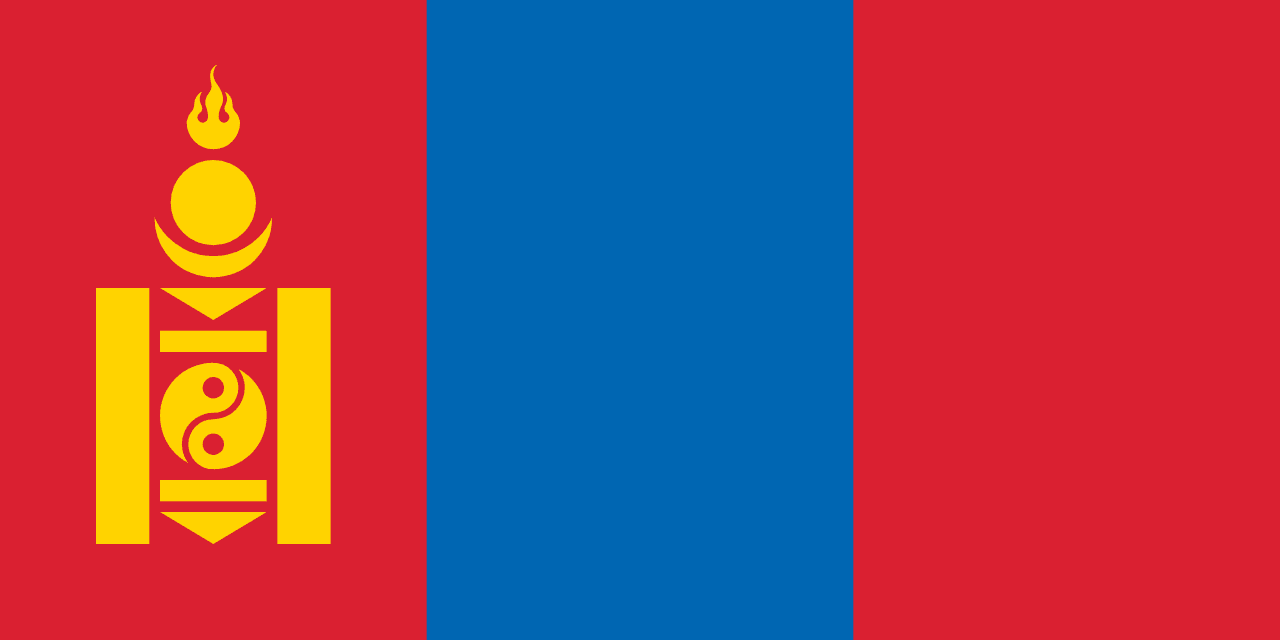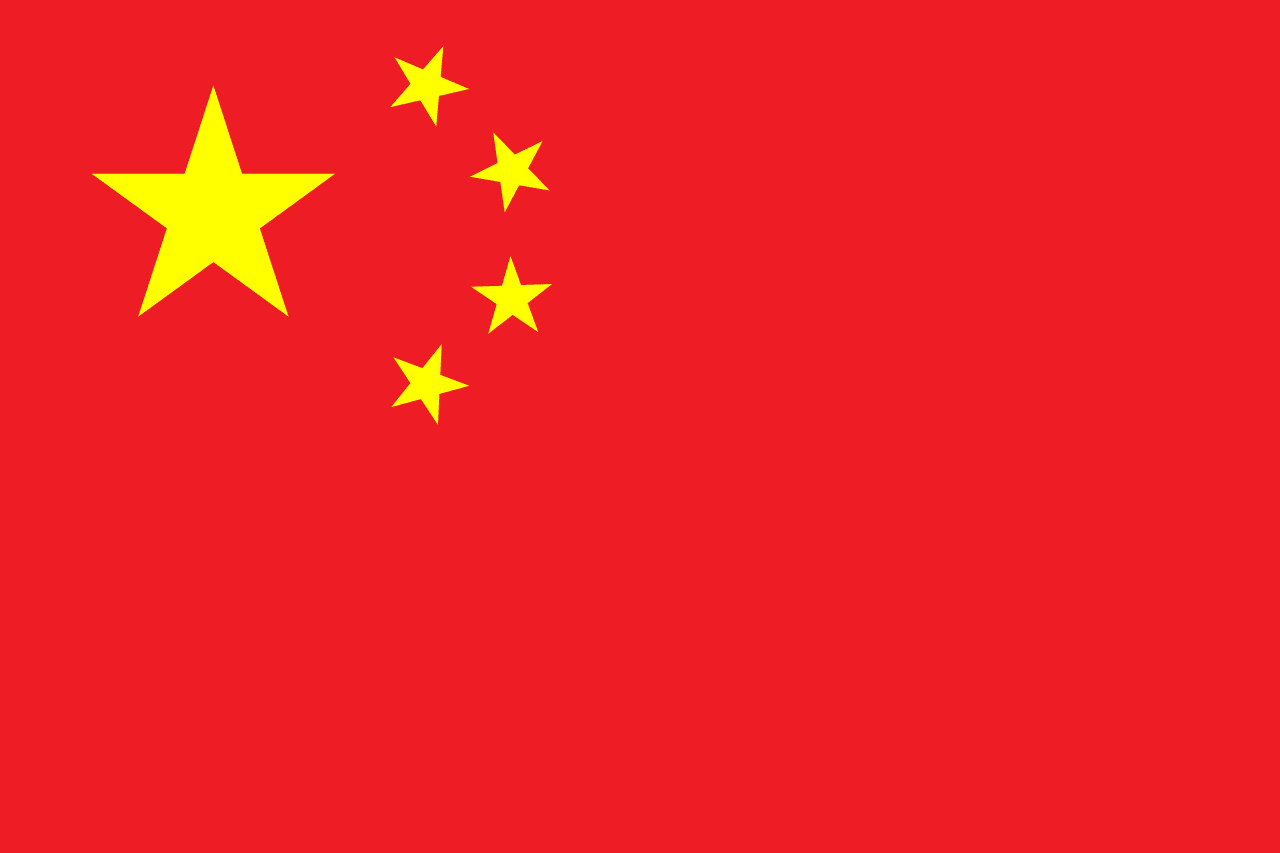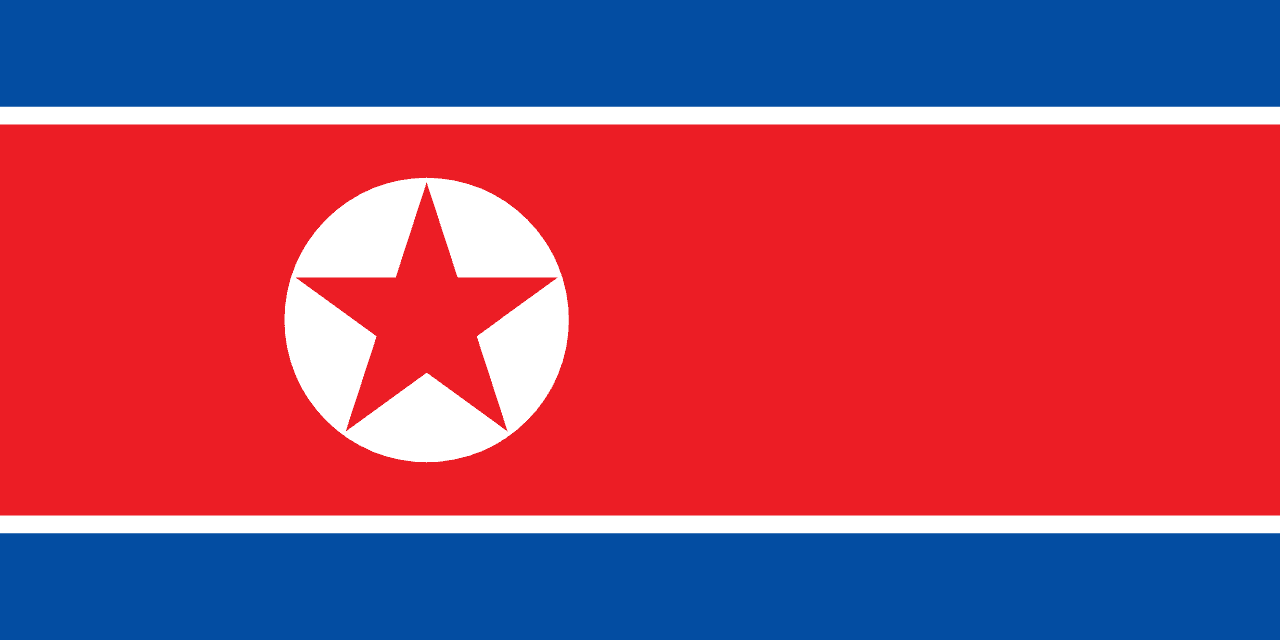Mongolia Flag Meaning
Three vertical stripes of red, blue, and red with the ancient Soyombo symbol in yellow on the hoist-side red stripe, representing Mongolia's transition to democracy and its deep philosophical traditions rooted in Tengrism and Buddhism.
- Continent
- Asia
- Adopted
- 1992
- Ratio
- 1:2
- Colors
- red, blue, yellow

Symbolism
Red Stripes: Represent the ability of Mongolia to thrive and prosper, symbolizing progress, prosperity, and the strength of the Mongolian people. Also represents the eternal blue sky's reflection in the red earth of the steppes.
Blue Stripe: Represents the eternal blue sky (Munkh Khokh Tengri), the most sacred concept in traditional Mongolian Tengrism, symbolizing peace, prosperity, and the infinite nature of the heavens.
Soyombo Symbol: Ancient symbol representing the independence of Mongolia and containing multiple elements of Mongolian cosmology, philosophy, and spiritual beliefs dating back to the 17th century.
Fire Element (Top): The flame at the top of the Soyombo represents renewal, growth, wealth, and success. The three tongues of flame symbolize the past, present, and future.
Yin-Yang Element: Represents the complementary relationship between man and woman, and the balance of opposing forces in nature, reflecting Buddhist and Taoist influences in Mongolian philosophy.
History
- 17th Century: The Soyombo symbol was created by Zanabazar, the first Jebtsundamba Khutughtu (spiritual leader) of Mongolia and a renowned artist, sculptor, and scholar.
- 1911-1921: During the Bogd Khanate period after Chinese rule, early versions of Mongolian flags featured the Soyombo symbol, establishing its connection to Mongolian independence.
- 1924-1992: Under the Mongolian People's Republic (communist era), flags featured the Soyombo symbol alongside communist stars, combining traditional Mongolian symbols with Soviet ideology.
- 1989-1990: Democratic revolution began in Mongolia, inspired by changes in the Soviet Union and Eastern Europe, leading to the end of one-party communist rule.
- February 12, 1992: The current flag was officially adopted with the new democratic constitution, removing communist symbols while retaining the ancient Soyombo symbol and traditional colors.
- 1992-Present: The flag represents Mongolia's successful transition to democracy and market economy while maintaining its unique cultural identity and spiritual traditions.
- 1990s-2000s: The flag gained international recognition as Mongolia developed diplomatic relations worldwide and joined international organizations as a free, democratic nation.
Trivia
- The Soyombo symbol appears on Mongolia's state emblem, currency, and official documents, making it one of the most important national symbols in Mongolian culture.
- Mongolia was the second communist country in the world (after the Soviet Union) and one of the earliest to peacefully transition to democracy in the 1990s.
- The Soyombo contains 10 different elements, each with specific meanings: fire, sun, moon, earth, water, yin-yang, and geometric shapes representing strength and eternity.
- The blue stripe represents the 'eternal blue sky' (munkh khokh tengri), which is considered the highest deity in traditional Mongolian Tengrism religion.
- Zanabazar, who created the Soyombo symbol, was also a master sculptor whose works are displayed in monasteries throughout Mongolia and are considered national treasures.
- Mongolia is one of the few countries whose flag combines ancient shamanic/Tengrist symbols with Buddhist elements, reflecting the country's unique spiritual heritage.
- The flag appears on Mongolian tugrik banknotes alongside images of Genghis Khan and traditional Mongolian scenes, connecting modern Mongolia to its imperial past.
- During Naadam Festival (Mongolia's 'Three Games of Men'), the flag is prominently displayed during wrestling, horse racing, and archery competitions.
- The flag's adoption in 1992 coincided with Mongolia's new constitution, which established it as a multi-party democracy after 68 years of one-party rule.
- Traditional Mongolian gers (yurts) often display the flag during national holidays, particularly on Naadam (July 11-13) and Independence Day (December 29).
- The Soyombo script, also created by Zanabazar, was one of several scripts used to write Mongolian before the adoption of Cyrillic during the Soviet era.
- Mongolia's flag represents one of the world's most successful peaceful transitions from communism to democracy, inspiring other post-communist nations.
- The flag appears prominently during the annual migration seasons when nomadic herders move across the steppes, symbolizing continuity of traditional lifestyle.
- Modern Mongolian athletes wear the flag colors during international competitions, particularly in traditional sports like wrestling and horse racing at the Olympics.
- The flag flies over Gandan Monastery in Ulaanbaatar, one of Mongolia's most important Buddhist centers, symbolizing the restoration of religious freedom after communist rule.
Related Countries

China
Asia
Red field with five golden stars representing unity under Communist leadership and the four social classes.

Russia
Europe/Asia
A horizontal tricolor of white, blue, and red, representing the Russian Federation’s national identity, history, and Slavic heritage.

North Korea
Asia
The flag of North Korea, adopted in 1948, combines red, white, and blue with a central red star. Its design reflects socialist symbolism while incorporating elements rooted in Korean identity. For the state, it represents revolution, unity, and loyalty, while for observers it has become one of the most recognizable emblems of the modern Korean peninsula.

South Korea
Asia
A white field with a red and blue taegeuk (yin-yang symbol) in the center surrounded by four black trigrams from the I Ching, representing the harmony of opposites, the balance of natural forces, and the philosophical foundations of Korean civilization dating back thousands of years.

Kyrgyzstan
Asia
A red field with a yellow sun featuring 40 rays and a tunduk (yurt crown) in the center, representing the nomadic heritage, unity of 40 tribes, and the traditional dwelling of the Kyrgyz people in this mountainous Central Asian nation.

Bhutan
Asia
Divided diagonally with orange in the upper triangle and yellow in the lower triangle, featuring a white dragon (Druk) in the center holding jewels in its claws, representing the spiritual and temporal power of Bhutan and the Thunder Dragon that gives the country its name 'Land of the Thunder Dragon.'